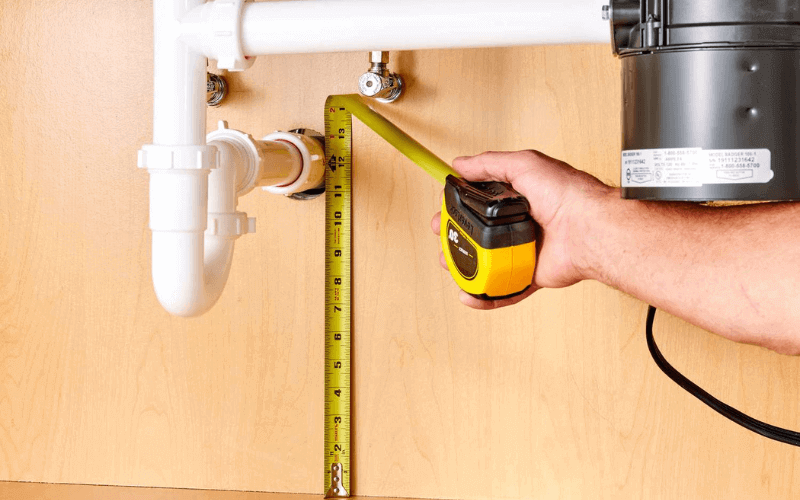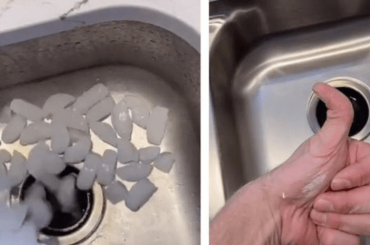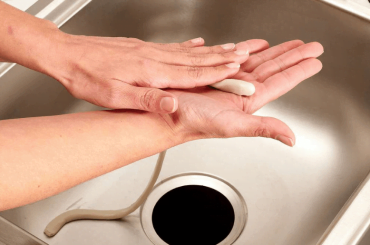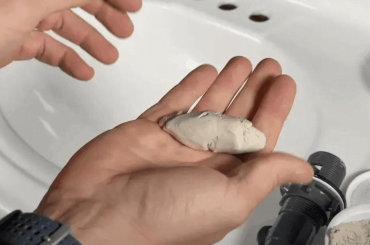When you are choosing a kitchen sink one of the most important factors to consider is the size of the drain. When remodeling your kitchen, you may find that you need to replace the sink.
Sinks come in all shapes and sizes, so it’s important to measure your current sink before purchasing a new one. This will help ensure that you get a sink that fits properly in your kitchen.
In this blog post, we will show you how to measure your kitchen sink drain so that you can purchase the correct size drain for your sink. We will also provide some tips on how to install your new kitchen sink drain.
So, whether you are looking to replace an old drain or are installing a new kitchen sink, read on for all the information you need!
How To Measure Sink Drain Size?
To measure the size of your kitchen sink drain, you will need to know the dimensions of your sink.
- First step is to measure the length and width of your sink.
- Next, measure the distance from the center of the drain to the edge of the sink.
- These measurements will help you determine the size of your kitchen sink drain. For most sinks, the standard drain size is 1-1/2 inches in diameter.
Are kitchen sinks and bathroom sink drains are same in sizes?
No, kitchen sinks and bathroom sink drains are not the same sizes. The drain size for a kitchen sink is typically 1-1/2 inches in diameter, while the drain size for a bathroom sink is usually 1-1/4 inches in diameter.
When choosing a new drain for your kitchen sink, be sure to select a drain that is the correct size for your sink.
How to measure your sink’s drain size?
- To measure your sink’s drain size, you will need a tape measure and a pencil.
- Measure the width of the sink’s drain opening with the tape measure.
- Use a pencil to mark the measurement on a piece of paper.
- Measure the height of the sink’s drain opening with the tape measure.
- Compare the two measurements to find out what size drain your sink needs.
- If your sink’s drain opening is less than 2 inches wide or less than 4 inches tall, you will need a 1-1/2 inch drain.
- If your sink’s drain opening is between 2 and 4 inches wide, you will need a 2-inch drain.
- If your sink’s drain opening is more than 4 inches wide or more than 6 inches tall, you will need a 3-inch drain.
- Once you know what size drain your sink needs, you can purchase a new one and install it yourself, or hire a professional to do it for you.
Tips for installing new kitchen sink drain
Some tips below for installing a new kitchen sink drain:
- First, make sure you have the right tools for the job. You will need a wrench, pliers, a screwdriver, and a utility knife.
- Next, turn off the water in your sink. This can be done by shutting off the valves under the sink or by turning off the main water supply to your home.
- Once the water is turned off, remove the old drain by unscrewing it from the sink. Be careful not to harm the sink while doing this.
- Clean out any debris that may be in the sink area. This includes old caulk or sealant.
- Place the new drain in position and secure it using screws or bolts. Make sure it is tight so that there are no leaks.
- Finally, turn the water back on and check for any leaks. If there are none, your new kitchen sink drain is installed!
How to clean your kitchen sink’s drain?
If your kitchen sink’s drain is clogged, there are a few things you can do to try and clean it yourself before calling a professional.
- First, remove any food or debris that may be caught in the drain.
- Next, use a plunger to try and dislodge the clog. If this doesn’t work,
- you can try using a plumber’s snake to reach down into the drain and clear the obstruction.
- Finally, if all else fails, you may need to call a professional plumber to come and deal with the issue.
FAQs – Measure Sink Drain Size
What is the standard size of a kitchen sink drain opening?
The standard size of a kitchen sink drain opening is 2- inches in diameter. However, some sink manufacturers may produce sinks with drain openings that are slightly larger or smaller than this standard size.
It is important to check the specifications of your particular sink before purchasing a drain assembly to ensure that it will fit properly.
Are kitchen sink drains a universal size?
No, kitchen sink drains are not a universal size. There are many different sizes and types of the kitchen sink drain, so it is important to measure your drain before purchasing a new one.
If you are unsure of the size or type of drain you need, it is best to consult a professional plumber for help.
What type of pipe is used for the kitchen sink drain?
A kitchen sink drain is typically connected to a pipe made of PVC, which is a type of plastic. This type of pipe is often used in homes because it is durable and easy to install.
PVC pipes are also resistant to corrosion, which is important in a sink drain because it is constantly exposed to water.
PVC pipes are white or light grey and have a slightly glossy surface. They are also very smooth, which helps to prevent clogs.
What size is a kitchen P-trap?
A kitchen P-trap is typically 1 1/2 inches in diameter. However, the size may vary depending on the manufacturer.
It is important to check the size of the P-trap before purchasing it to ensure that it will fit your sink.
Can a toilet and kitchen sink share the same drain?
No, a toilet and kitchen sink should not share the same drain. They are separate systems that serve different purposes.
Toilets expel waste and water from your home, while sinks supply clean water for cooking and cleaning.
If you have a clogged drain, it is best to call a plumber to clear the line. Trying to clear the line yourself could result in damaging the pipes.
Conclusion
Kitchen sink drain size can be measured by the number of holes on the strainer. A standard kitchen sink has either one or two holes in the strainer. If you have a three-hole kitchen faucet, your sink drain size is 3/4 inch.
If you want to buy a new kitchen sink and are not sure what size to get, measure your old sink’s hole diameter and then purchase a new sink that has the same size hole.





